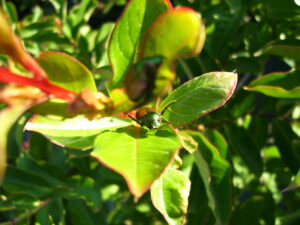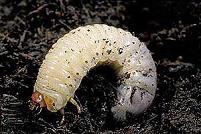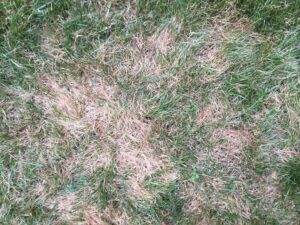Pest Alert – Japanese Beetles
go.ncsu.edu/readext?939053
en Español / em Português
El inglés es el idioma de control de esta página. En la medida en que haya algún conflicto entre la traducción al inglés y la traducción, el inglés prevalece.
Al hacer clic en el enlace de traducción se activa un servicio de traducción gratuito para convertir la página al español. Al igual que con cualquier traducción por Internet, la conversión no es sensible al contexto y puede que no traduzca el texto en su significado original. NC State Extension no garantiza la exactitud del texto traducido. Por favor, tenga en cuenta que algunas aplicaciones y/o servicios pueden no funcionar como se espera cuando se traducen.
Português
Inglês é o idioma de controle desta página. Na medida que haja algum conflito entre o texto original em Inglês e a tradução, o Inglês prevalece.
Ao clicar no link de tradução, um serviço gratuito de tradução será ativado para converter a página para o Português. Como em qualquer tradução pela internet, a conversão não é sensivel ao contexto e pode não ocorrer a tradução para o significado orginal. O serviço de Extensão da Carolina do Norte (NC State Extension) não garante a exatidão do texto traduzido. Por favor, observe que algumas funções ou serviços podem não funcionar como esperado após a tradução.
English
English is the controlling language of this page. To the extent there is any conflict between the English text and the translation, English controls.
Clicking on the translation link activates a free translation service to convert the page to Spanish. As with any Internet translation, the conversion is not context-sensitive and may not translate the text to its original meaning. NC State Extension does not guarantee the accuracy of the translated text. Please note that some applications and/or services may not function as expected when translated.
Collapse ▲
Japanese beetles emerge from the soil as adults at the first of June along with the other June beetles.
It is that time of year again. Japanese Beetles will be emerging in early June. The insects will leave the soil where they spent the winter as grubs to feed on leaves and fruits.
LIFECYCLE
Japanese beetles spend the winter as “c”-shaped white larvae in the soil. The larvae pupate into adults in June. Adults emerge from the soil in mid to late June through early July. On warm, sunny days adults fly around landscapes and orchards and feed on fruit and foliage. The insects mate at this time.
After mating, females lay eggs 2 to 6 inches deep in the soil. The eggs hatch after 8 to 9 days and immature grubs then develop in the soil. The grubs feed on the roots of grasses until the soil cools down in autumn. The grubs stop feeding and burrow into the soil where they remain until temperatures warm again in spring. There is usually only one generation per year.
DAMAGE
Adults attack fruit by chewing irregular holes in it, sometimes to the point that fruit is almost entirely consumed. Foliage is skeletonized until there is no leaf tissue remaining between the veins. Larvae feed on the roots of grass and other plants, causing the above-ground portion of the plant to turn brown.
Japanese beetles attack a wide variety of trees, shrubs, and field crops. Adult Japanese beetles are strong fliers and often appear suddenly after a rain. Therefore, protecting fruit and foliage requires killing beetles in the adult stage.
CONTROL
If a landscape or orchard has a history of problems, use contact insecticides before the beetles become too abundant. Groups of beetles tend to attract other beetles. Homeowners are NOT advised to use commercially available Japanese beetle “traps,” as they often serve only to attract more beetles than they capture.
Organic insecticides such as Azadiractin, Spinosad, Beauveria, horticultural oil and insecticidal soaps can be used. Synthetic insecticides such as bifenthrin, carbaryl and imidicloprid can be used to kill adults.
If you have had problems in the past, gardeners can apply grub control insecticide granules to their lawn in April/May or August/September. Try to get your neighbors to do the same.
Information for this article was excerpted from this NC State publication Japanese Beetles.






